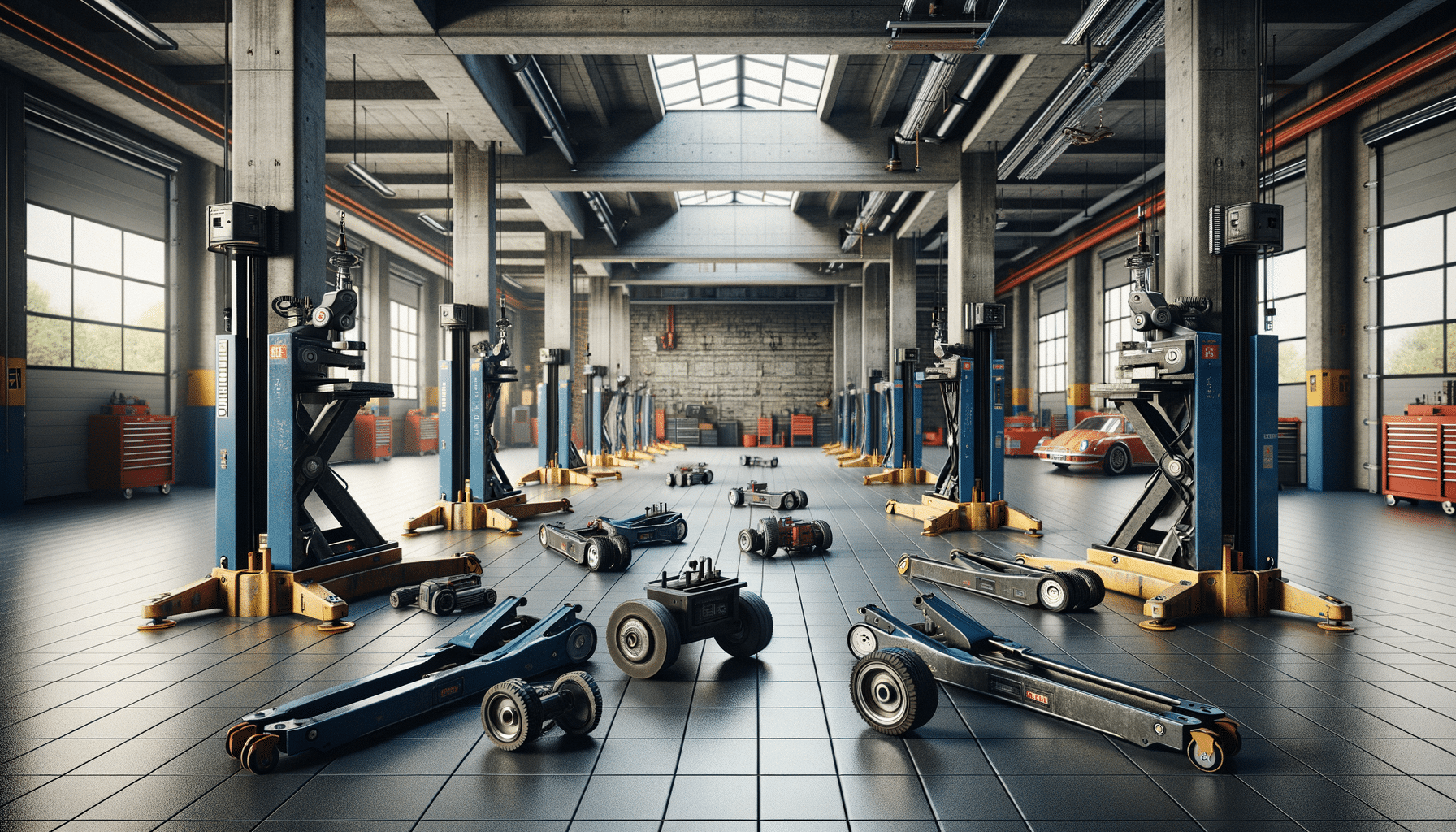
Car jacks and scissor lifts explained: types, uses, safety & cost
Understanding Different Types of Car Jacks and Scissor Lifts
When it comes to lifting vehicles, car jacks and scissor lifts are indispensable tools in the automotive world. Each type has its unique features, making them suitable for various applications. Car jacks, for instance, come in several varieties such as hydraulic jacks, bottle jacks, and floor jacks. Hydraulic jacks are renowned for their ease of use, providing a smooth lifting experience with minimal effort. Bottle jacks, on the other hand, are compact and capable of lifting heavier loads, making them ideal for trucks and SUVs. Floor jacks, with their longer reach and stability, are perfect for professional garages.
Scissor lifts, meanwhile, offer a different approach to vehicle lifting. These lifts are particularly useful in professional settings where space and versatility are crucial. They are designed to elevate vehicles to a comfortable working height, providing ample space for mechanics to conduct repairs and maintenance. Scissor lifts are available in both electric and hydraulic variants, each offering specific advantages depending on the intended use.
Understanding the differences between these tools is essential for choosing the right one for your needs. While car jacks are generally more portable and suitable for emergency roadside repairs, scissor lifts are better suited for comprehensive maintenance work in controlled environments.
Common Uses for Vehicle Maintenance and Repairs
Car jacks and scissor lifts serve a variety of purposes, making them indispensable for anyone involved in vehicle maintenance. For car owners, a jack is a handy tool for changing a flat tire or inspecting the undercarriage. The convenience of being able to quickly elevate a vehicle in the event of a roadside emergency cannot be overstated.
In professional garages, scissor lifts are frequently used for more extensive repairs and maintenance tasks. These lifts allow mechanics to perform tasks such as oil changes, brake repairs, and exhaust modifications with ease. The ability to raise a vehicle to a comfortable working height not only improves efficiency but also minimizes the risk of injury, making safety a top priority in any workshop setting.
Additionally, both car jacks and scissor lifts play a crucial role in vehicle inspections. Regular inspections are a vital part of vehicle maintenance, helping to identify potential issues before they become serious problems. By using these tools, mechanics can thoroughly examine the vehicle’s components, ensuring everything is in optimal working condition.
Safety Guidelines for Using Car Jacks and Scissor Lifts
Safety is paramount when working with car jacks and scissor lifts. To ensure a safe working environment, it is essential to follow specific guidelines. First and foremost, always use these tools on a stable and level surface. Uneven ground can lead to instability, increasing the risk of accidents. Additionally, it is crucial to engage the parking brake before lifting a vehicle to prevent any unwanted movement.
When using a car jack, always position it under the manufacturer-recommended lifting points. Incorrect placement can cause damage to the vehicle and compromise safety. It is also advisable to use jack stands to support the vehicle once it is lifted, providing an additional layer of security.
For scissor lifts, regular maintenance checks are essential to ensure they are in good working condition. Inspect hydraulic lines, electrical connections, and structural components for any signs of wear or damage. Proper training is also vital for anyone operating a scissor lift, as improper use can lead to severe injuries.
By adhering to these safety guidelines, you can minimize risks and ensure that your vehicle maintenance tasks are completed safely and efficiently.
Price Considerations for Car Jacks and Scissor Lifts
When it comes to purchasing car jacks and scissor lifts, price is an important factor to consider. Car jacks are generally more affordable, with prices varying based on the type and capacity. Hydraulic jacks, for instance, are often priced higher due to their ease of use and efficiency, while bottle jacks are more budget-friendly but offer great lifting power for their size.
Scissor lifts, being more sophisticated, tend to be a more significant investment. The cost of a scissor lift can vary widely depending on its capacity, lift height, and additional features such as portability and ease of use. For professional garages, investing in a high-quality scissor lift is often justified by the efficiency and safety it brings to vehicle maintenance operations.
When considering cost, it’s also important to factor in potential maintenance and repair expenses. Regular servicing can extend the lifespan of both car jacks and scissor lifts, providing better value over time. By weighing the initial cost against long-term benefits, you can make an informed decision that aligns with your needs and budget.
Conclusion: Choosing the Right Tool for Your Needs
In summary, both car jacks and scissor lifts offer valuable solutions for lifting vehicles, each catering to different requirements and environments. Car jacks, with their portability and affordability, are perfect for everyday vehicle owners and emergency situations. Scissor lifts, meanwhile, provide professional settings with the capability to perform comprehensive maintenance and repairs efficiently and safely.
Understanding the types, uses, safety guidelines, and price considerations associated with these tools will help you make informed decisions. Whether you’re a car enthusiast looking to perform your own maintenance or a professional mechanic in need of reliable equipment, selecting the right lifting tool is crucial for achieving your goals safely and effectively.


